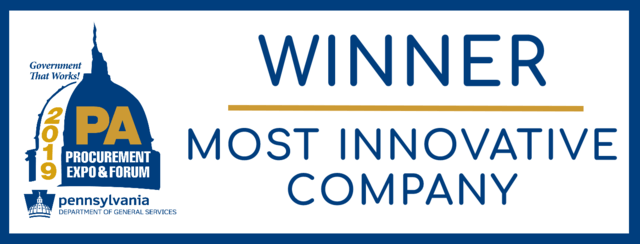
Sign up for Procurated
Procurated helps public sector buyers make more informed buying decisions through peer reviews. It is completely free to use.
Write and read reviews, find new suppliers, manage vendor performance and more!
Efficiency and Integrity: Cornerstones of Procurement
This article is based on our September 2020 interview with University of South Carolina's Stacy Gregg. Click here to listen to the podcast episode, "Creating Procurement Hurdles, Not Roadblocks with Stacy Gregg," in its entirety.
Public procurement officials keep our communities running. With over $3.5 trillion in state and local purchases per year, this is no small task. The role requires integrity, honesty, and dedication.
Public procurement officials keep our communities running. With over $3.5 trillion in state and local purchases per year, this is no small task. The role requires integrity, honesty, and dedication.
But in a field where process is king, it’s not uncommon for agency partners to associate procurement with "red tape" and "blockers." So what can we do to shift the narrative?
“Create hurdles, not roadblocks.”
In a recent interview with our team, University of South Carolina’s Stacy Gregg explained the critical mindset shift that allowed her to be more strategic in procurement. According to Stacy, too many buyers hit the brakes when faced with a challenge in the process. They tell the agency “no” before explaining to them “why” and working together to create a solution.
To the agency, procurement is the roadblock standing between them and the goods or services their community needs. So, many do their best to work around procurement. While the agency may get what they need in the short-term, there are consequences: higher prices, delayed timelines, and ethical violations, to name a few.
Here’s where the shift happens. Early and often, Stacy is working to build strong relationships with her agency partners. By inviting them into the process, Stacy demonstrates how procurement can save time, money, and headache. She shows how (and why) the agency is best served going through, not around, the purchasing department. She is creating hurdles, not roadblocks.
Put to the test: The Thousand Year Flood of 2015
In 2015, a Thousand Year Flood occurred in South Carolina, taking the lives of 19 people and causing over $1.4 billion in damage.
In the aftermath of the flooding, South Carolina was awarded a Community Development Block Grant by the U.S. Department of Housing and Urban Development. This grant provided the state with more than $60 million to replace homes damaged by the flood.
Stacy views this project as most important procurement of her career. To get South Carolina residents back into their homes she had to award the contract with speed and accuracy. And to do that she selected a full spectrum supplier to execute the project from start to finish.
Faced with an ethical dilemma, and a choice
The Department of Commerce owned the contract and was working hard to plan a successful program. Stacy’s role was to oversee the RFP and vendor selection process on behalf of procurement.
When they reached the evaluation stage, Stacy noticed that managers were sitting on the same panels as their direct reports. This subordinate relationship presented an immediate conflict of interest.
Stacy had a choice. She could demand that they do things “her way” and shut the evaluation process down. That would mean the creation of a new panel and a delay in the necessary home repairs. Her other option was compromise. Comprimise meant keeping the existing panel while following the most important procurement statutes.
She chose the latter. Rather than halting the evaluation process, Stacy invited a member of her department to join the evaluation panel. His scores served as the control group, a reference point to highlight any conflict of interest that may have affected the panels’ scoring.
Creating a hurdle, creating a huge impact
Stacy’s flexibility paid off – the scoring proved to be ethical and the contract was awarded without a hitch. In fact, this contract was the first of several other housing programs to get through the procurement process.
Stacy’s “hurdle” mindset helped see the contract through from beginning to end. Her focus on communication and transparency allowed for the first member of the program to move into their new home by the end of the year.
Key takeaways from Stacy’s experience
Even though your department may not be facing a historic flood anytime soon, there are several key takeaways from Stacy’s story:
- Remember there’s more to the procurement…than procurement. Stacy knew that taking a hardline approach would reduce the hard work done by the agency’s architects and planners. Remember that procurement is one piece of the larger puzzle. Understanding and validating agency priorities helps build trust and create more productive dialogue.
- Keep the finish line in mind. On many occasions, Stacy reminded herself that a procurement delay would keep people from having a home. While every procurement may not have a life-altering effect, there is almost always a common cause to work toward. Finding a creative solution will benefit real people in your community.
- Be willing to be flexible. Stacy’s flexibility and willingness to compromise was essential to awarding the contract on time. Agility and an open mind free up many more options than a fixed mindset.
- Set firm boundaries. "Creating hurdles, not roadblocks" doesn’t mean "throw the rulebook out the window." Stacy was prepared to dissolve the panel if she had to. Understand and uphold your boundaries.
- Anticipate future challenges. Before the contract was awarded, the integrity of the evaluation panel was questioned. Stacy was able to squash these concerns by showing the control evaluator’s scores were consistent with those of the panel.
Want to hear more stories like this? Subscribe to our weekly newsletter for industry trends, exclusive interviews with procurement leaders, and more.
Published on Nov 12, 2020

